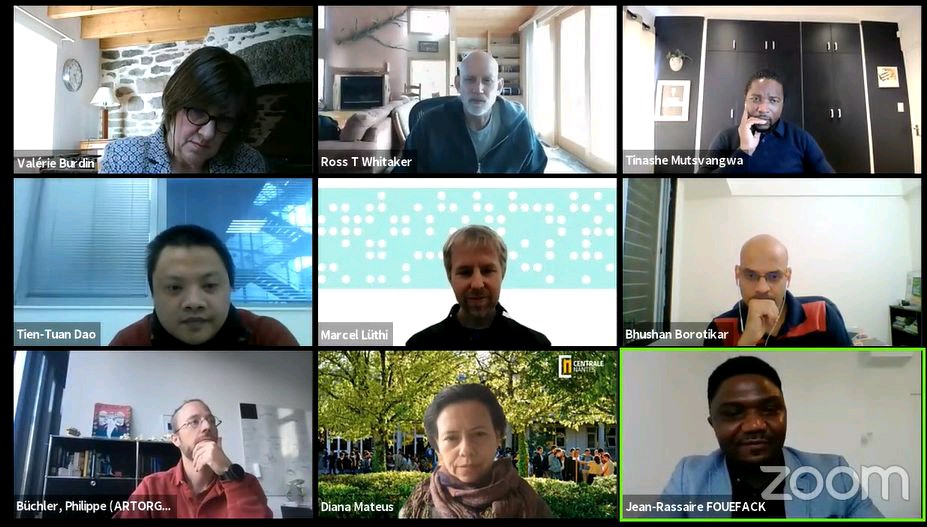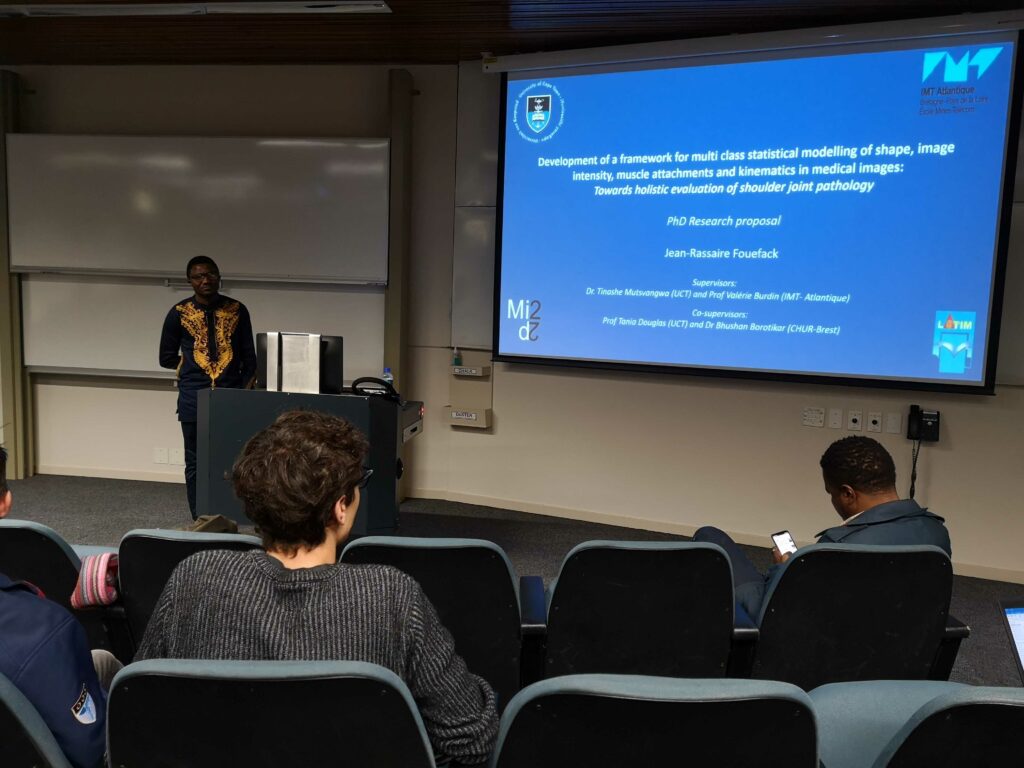Dr. Jean-Rassaire Fouefack, AIMS-Cameroon alumnus of the 2014-2015 batch, has successfully earned a joint PhD in Biomedical Engineering and Signal processing from the University of Cape Town (South Africa) and IMT Atlantque (France); a milestone achieved in 3 years. The topic of his thesis was “Towards a Framework for multiclass Statistical Modelling of Shape, Intensity and Kinematics in Medical Images.”

This giant stride was made under the co-supervision of Prof. Tania Douglas (University of Cape Town, South Africa) and A/Prof. Bhushan Borotikar (Symbiosis Centre for Medical Image Analysis, India), with the main aim of developing and validating a framework for multi-class statistical modelling of shape, kinematics and intensity in medical images.
During his defense on March 18th 2021, Jean-Rassaire emphasized that statistical learning-based models become a ubiquitous tool for analysing morphological variations of bone structures in medical images. He further explained that for radiological images, the shape, relative pose between the bone structures and the intensity distribution are key features often modelled separately and a wide range of research has reported methods that incorporate these features as priors for machine learning purposes.
His work is mainly based on the fact that although statistical shape, appearance (intensity profile in images) and pose models are popular priors to explain variability across a sample population of rigid structures; however, a principled and robust way to combine shape, pose and intensity features has been elusive for four main reasons namely: 1. heterogeneity of the data (data with linear and non-linear natural variation across features); 2. sub-optimal representation of three-dimensional Euclidean motion; 3. artificial discretization of the models; and 4. lack of an efficient transfer learning process to project observations into the latent space.

In his work, Jean-Rassaire proposes a novel statistical modelling framework for multiple bone structures. The proposed framework provides a latent space embedding shape, pose and intensity in a continuous domain allowing for new approaches to skeletal joint analysis from medical images. It is worth noting that this framework was validated using controlled experimental data and the results demonstrate superior performance in comparison with state-of-the-art methods.
Jean-Rassaire’s results are beneficial to the African continent and the world at large. In fact, three-dimensional medical images such as magnetic resonance (MR) and computed tomographic (CT) images play an important role in the management of musculoskeletal disorders (MSDs) for diagnostic and orthopaedic surgical guidance. However, these images have a high cost which limits their utility in the clinical routine, especially in the African continent. The developed framework could be used in medical practices for digitally reconstructed radiographs (DRRs) which are used to have 3D representations of the anatomical structures of interest as well as provide knowledge about their physiological interaction and could be an alternative to image volumes and they only required X-ray images which are more affordable on the continent.

Dr. Jean-Rassaire Fouefack acknowledged the generous support of all the parties that co-funded his work hence contributing to the successful completion of his PhD studies, namely: the Brest Metropole (France) and South African Research Chairs Initiative (NRF-SARChI) in Biomedical Engineering and Health Innovation.
“I would also like to express my gratitude to AIMS-Cameroon, for grooming me academically and ushering me into this exciting and rewarding level of research”, he said.
Dr. Jean-Rassaire Fouefack has had an opportunity to indulge in a Postdoctoral fellowship at the National Institute of Health and Medical Research (LaTIM INSERM UMR 1101), Brest, France, before considering other directions. His research interests include Machine Learning, Medical Image Analysis, Statistical Inference and Shape Analysis.
